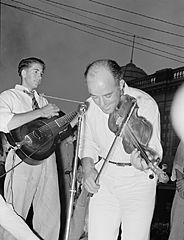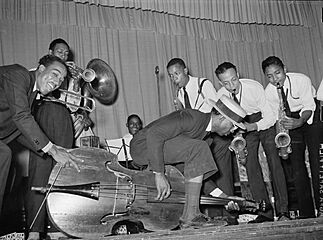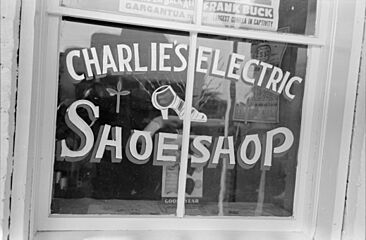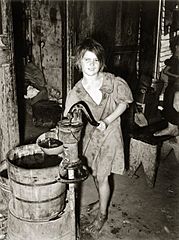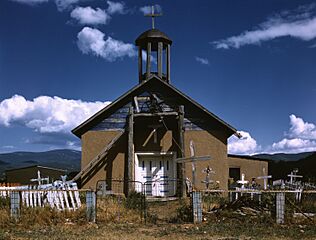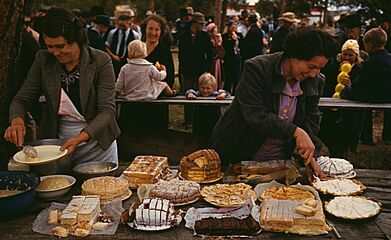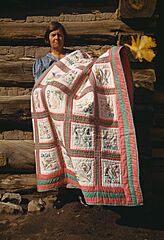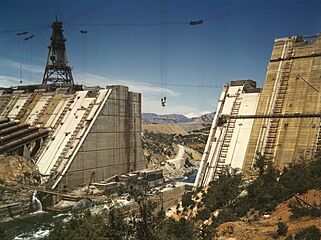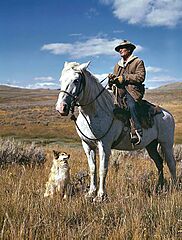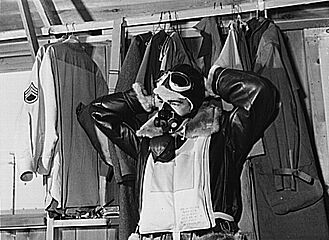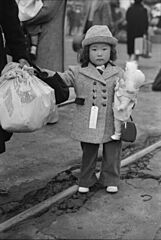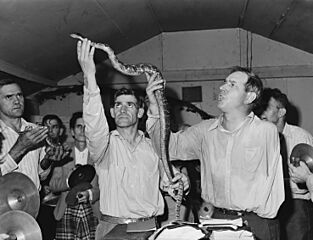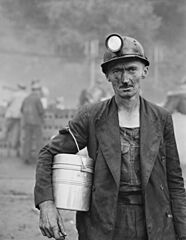Russell Lee (photographer) facts for kids
Quick facts for kids
Russell Lee
|
|
|---|---|
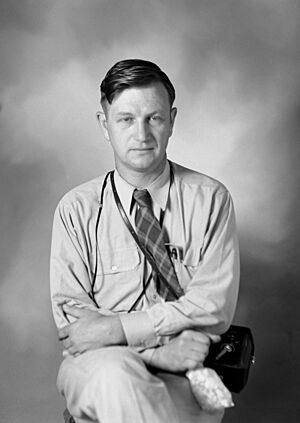
Lee, c. 1942
|
|
| Born |
Russell Werner Lee
July 21, 1903 Ottawa, Illinois, United States
|
| Died | August 28, 1986 (aged 83) Austin, Texas, United States
|
Russell Werner Lee (born July 21, 1903, died August 28, 1986) was an American photographer. He was famous for his work as a photojournalist. Lee is best known for the pictures he took for the Farm Security Administration (FSA). This was during a tough time in American history called the Great Depression. His photos showed the daily lives and cultures of many different American people.
Contents
Russell Lee's Early Life
Russell Lee grew up in Ottawa, Illinois. His parents were Burton and Adeline Lee. He went to high school at Culver Military Academy in Indiana. Later, he earned a degree in chemical engineering from Lehigh University in Pennsylvania.
Lee first worked as a chemist. But he soon decided to become a painter instead. He started using photography to help with his paintings. However, he quickly became very interested in photography itself. He began taking pictures of the people and places around him. Some of his first photo subjects included secret coal mining in Pennsylvania. He also photographed a religious group called the Father Divine cult.
Russell Lee's Photography Work

In 1936, during the Great Depression, Russell Lee got a job with the Farm Security Administration (FSA). This was a government project started by President Franklin D. Roosevelt. The FSA hired photographers to document life in America. Lee joined a team led by Roy Stryker. Other famous photographers on the team included Dorothea Lange, Arthur Rothstein, and Walker Evans.
Stryker guided the team and protected them from problems. This allowed the photographers to create an amazing collection of pictures. People later called it "the greatest documentary collection which has ever been assembled."
Documenting Japanese American Relocation
In the spring and summer of 1942, Lee was one of several government photographers. Their job was to document the forced relocation of Japanese Americans from the West Coast. He took over 600 pictures. These photos showed families waiting to be moved. They also showed their lives in special camps. Most of these camps were in isolated areas inside the country.
After the FSA: New Projects
The FSA project ended in 1943. After that, Lee worked for the Air Transport Command (ATC). During this time, he photographed all the airfields the ATC used. These airfields helped supply the military during World War II.
From 1946 to 1947, Lee worked for the United States Department of the Interior (DOI). He helped them study the health of people in coal mining towns. He took more than 4,000 photos of miners and their working conditions. In 1946, he also took a series of photos of a Pentecostal Church of God in a Kentucky coal camp.
While working for the DOI, Lee also continued to work with Roy Stryker. He took public relations photos for Standard Oil of New Jersey.
In 1947, Lee moved to Austin, Texas. He kept taking pictures there. In 1965, he became the first photography teacher at the University of Texas at Austin.
Russell Lee's Legacy
Russell Lee's photographs are kept in many important collections. These include the University of Louisville, the New Mexico Museum of Art, and the Wittliff collections at Texas State University. His work is also at the Dolph Briscoe Center for American History at the University of Texas at Austin. A large collection is also held at the Library of Congress.
In 2016, an elementary school in Austin, Texas, was renamed Russell Lee Elementary. This was done to honor the famous photographer.
Selected Photographs
-
A conversation at the General Store near Jeanerette, Louisiana, 1938
-
A Cajun fiddler in Crowley, Louisiana, 1938
-
A segregated drinking fountain in Oklahoma City, Oklahoma, 1939
-
An elderly man born in slavery displaying a horn formerly used to call slaves near Marshall, Texas, 1939
-
A Catholic church in Llano, New Mexico, 1940
-
Food at the Pie Town, New Mexico fair, 1940
-
A quilt in Pie Town, 1940
-
Shasta Dam under construction, 1942
-
A Montana shepherd, 1942
-
A child relocating to Owens Valley as part of the Japanese American internment, 1942
-
A coal miner in Wheelwright, Kentucky, 1946




